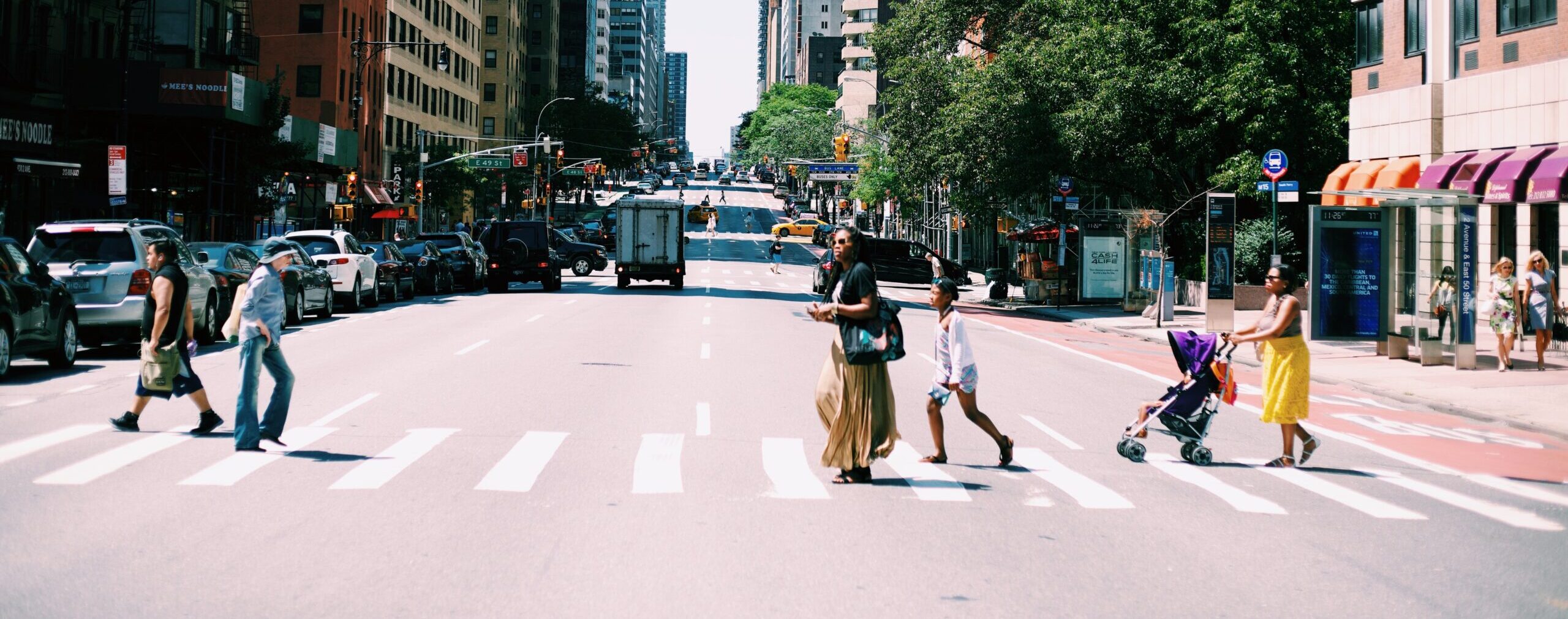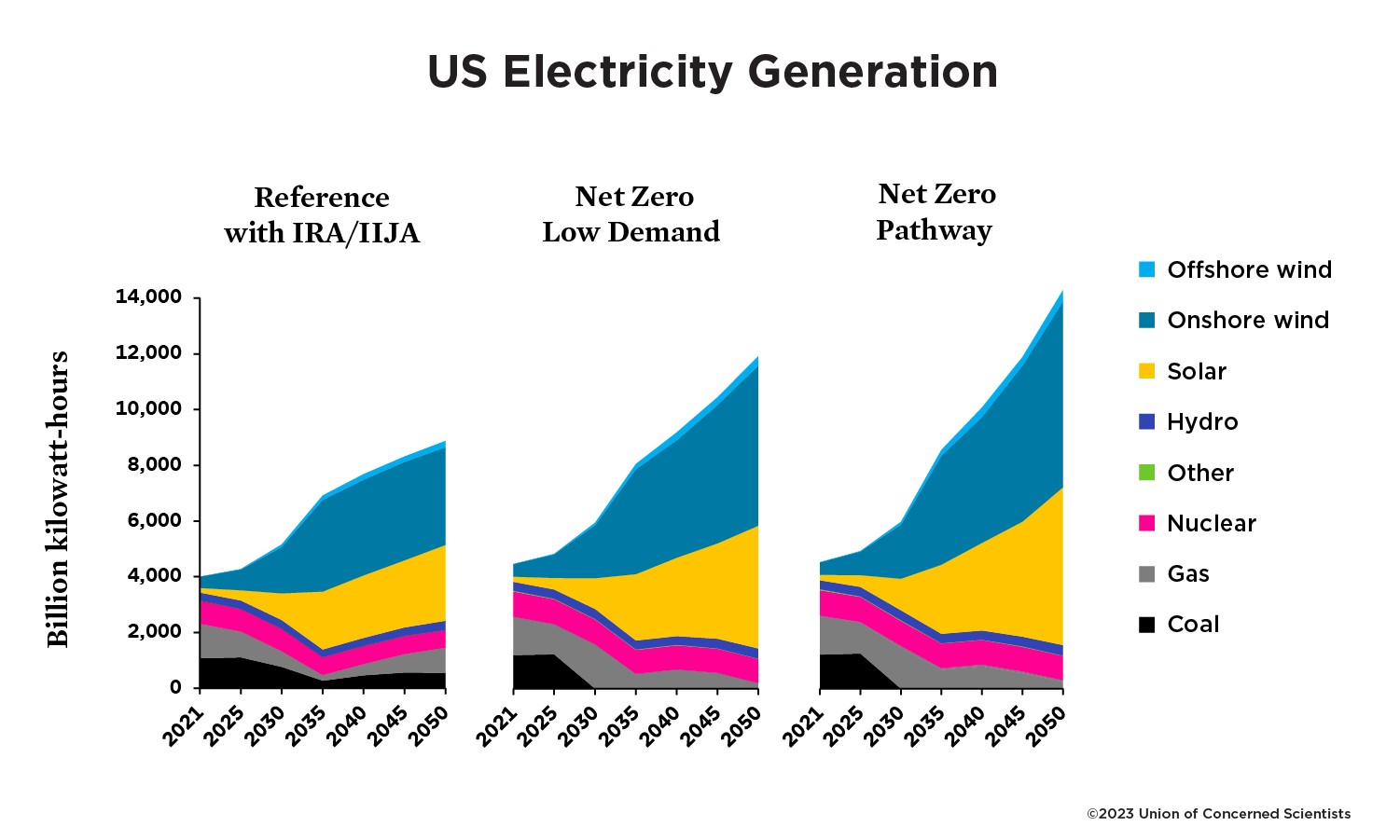
Photo by Jesus Kiteque on Unsplash
This article was written by Steven Higashide, and first appeared on The Equation, a blog by the Union of Concerned Scientists
By expanding renewable power, phasing out fossil fuels, electrifying as much of the economy as possible, and deploying other technologies, the U.S. can achieve its climate goals by 2050—and a new report from UCS shows how.
Transportation is the largest contributor to US global warming emissions, and we have choices around how we transform it. Electrifying cars and trucks is essential to solving the challenge. But vehicles are energy-intensive. By expanding public transportation and rail, and by planning our communities in ways that let people meet their needs with biking, walking, and shorter driving trips we can make the clean energy transition more achievable and affordable. UCS analysis suggests that these types of changes to the transportation system would give people more choices for getting around, while reducing power generation needs in 2050 by 357 terawatt-hours—the equivalent of building 39,000 wind turbines.
More transportation options = less buildout of the electric grid
UCS’s project examined several ways that the US can lower global warming emissions consistent with limiting overall warming to 1.5 degrees Celsius. When it comes to transportation, every pathway involves a few essential decisions:
- Electrifying 100% of passenger vehicles and freight trucks.
- Building substantial amounts of clean energy to power the electrification of transportation (and other sectors like buildings and industry).
- For the transportation modes that are hardest to electrify, such as aviation and shipping, turning to less carbon-intense fuels such as biofuels and hydrogen produced primarily through electrolysis.
Such a transition offers immense benefits: Not just securing a safer world with fewer climate-related disasters, but tens of thousands of lives saved by virtually eliminating tailpipe pollution from vehicles, and the potential to create vast new industries manufacturing and deploying clean vehicles and technologies. But it requires ambitious policies, including nearly tripling renewable energy’s share of US electricity generation by 2030 (see graph below). Technologies like biofuels and hydrogen, while necessary, come with potential drawbacks.
Better transportation planning can ease the tradeoffs and reduce the amount of infrastructure we need to build. The US has one of the most car-centric transportation systems in the world. Even compared to Canada and Australia—two sprawling nations shaped by the automobile—the US has sparser public transportation, more dangerous conditions for pedestrian and bicycle travel, and national policy that is more focused on building highways. Today, this makes the U.S. transportation system the most carbon-intensive among wealthy countries; in a future with clean energy and clean vehicles, it will still be energy-intensive relative to its peers.
But what if the US took a more balanced approach to travel? UCS’s report models a “low energy demand” scenario, which examines a world in which policies like reimagined industrial processes and high-efficiency building design reduce the need for electricity. On the transportation side, this scenario includes increasing public transit and rail use by 50 percent and freight rail use by 35 percent by 2050; driving in light-duty vehicles declines by 20 percent and aviation 10 percent compared to the U.S. Energy Information Administration’s projections. This represents approximately a 5 percent decline in per-capita driving from today—a highly achievable goal.
Lowering demand for energy reduces the amount of power generation the US needs to build by 15 percent, with significantly less power storage and distribution required as well. It also reduces use of biofuels by 15 percent, hydrogen by 16 percent, and carbon capture and sequestration by 19 percent. Looking just at transportation, electricity demand for vehicles falls by nearly 18 percent, from 1,992 terawatt-hours to 1,635–enough to power 35.4 million homes. In sum, the clean energy transition is achieved at less cost and with greater societal benefit. And that’s not even including the benefits associated with expanded transit networks, such as reduced social isolation and health care costs.

The future is now
A less car-dependent future is no pipe dream. It’s already happening in many places. Take Seattle: On Election Day 1996, the region’s residents approved the first of many measures that would change their transportation future, a plan to build a light-rail system connecting downtown with SeaTac airport.
Over the next 25 years, Seattle became one of the fastest-growing regions in the United States, and one where growth was largely independent of the car. Today, the light-rail system carries 81,000 people daily and spans 30 miles, with projects underway to eventually expand it to 116 miles. Voters have repeatedly recommitted to a transit-first vision, including expansions to local bus service that have blanketed the region with frequent public transportation service. In 2019, 70 percent of Seattle residents lived within walking distance of a bus or train service running at least every ten minutes—up from 25 percent in 2015.
State and federal policy supported these local initiatives. Beginning in the 1990s, Washington became a national leader in “transportation demand management” policies that required large employers to help their staff find alternatives to driving to work. Federal grants have gone to the rail network, improved bus service, and safe bike networks.
Seattleites didn’t just vote for transit at the ballot box; they voted for it with their feet, with transit ridership steadily growing throughout the 2010s. Overall transit ridership fell during the pandemic and remains impacted by the pivot to remote work. But because the regional system continued to expand, some parts of the public transportation network now carry more people than in 2019, and transit agencies have set new single-day ridership records this year.
Giving people more choices has helped them leave the car at home—or avoid purchasing a private vehicle to begin with. The average Seattle resident drove just 6,150 miles a year in 2018, 17% fewer than in 2005. And in Washington, driving declined by more than in any other state between 1996 and 2021.
Washington’s recent history helps illustrate how land use and transportation planning can help the U.S. achieve its climate goals in the years ahead. And it’s not alone. In fact, driving has declined in 17 states in the past two decades, in both highly urban states (like Virginia, where governors and mayors have oriented growth around the Metrorail system and expanded statewide rail service) and rural ones (like Vermont, which has creatively repurposed federal highway funding to support statewide bus and Amtrak service).
Transportation choices ahead
At every level of government, policymakers can make choices that lead to a more balanced transportation system. Municipal leaders can build “complete streets” where it’s safe to walk, bike and ride transit. Incentives can make e-bikes more affordable to more people. Zoning can help build more walkable neighborhoods with clustered development.
At the state and federal level, one of the most urgent needs is to put public transportation systems on stable financial footing. The COVID-19 pandemic eroded transit finances and strained agency workforces, and federal relief funding was essential to keep service running. Bus and train ridership is now steadily rebounding, but the end of emergency federal funding could snuff out this fragile recovery. States need to help public transportation agencies surmount this “fiscal cliff” and continue expanding service for future needs.
Another important action is influencing how transportation funding from the Bipartisan Infrastructure Law is spent. Federal agencies have steered some BIL funds to transformational projects, including the largest investments in intercity rail in decades. But most funding is controlled by state governments, who have wide discretion to spend it on projects that range from climate-friendly to climate-hostile. Texas, for example, plans to spend tens of billions of dollars to expand highways through Austin and Houston, displacing thousands of people and arguably skirting environmental law. This flexibility is why, according to an analysis from the Georgetown Climate Center, the BIL could be either net-positive or net-negative for climate. State departments of transportation need to follow the lead of Colorado and Minnesota, which recently adopted rules that require the creation of more transportation options.
Let’s put our whole team on the floor
When it comes to transportation, it’s essential that the US enact policies that get us to 100% zero-emission vehicles, and build renewable energy to power those vehicles. But relying only on this strategy has risks, like a basketball team that gives the ball to the same star every play and expects them to score. Rather than put all of the weight on the shoulders of vehicle manufacturers and electric utilities, we should spread the load. Planners, mayors, and public transit agencies have critical roles to play in building places with more affordable and accessible transportation options. Together, we can win the clean, connected, affordable, and accessible transportation system we need.